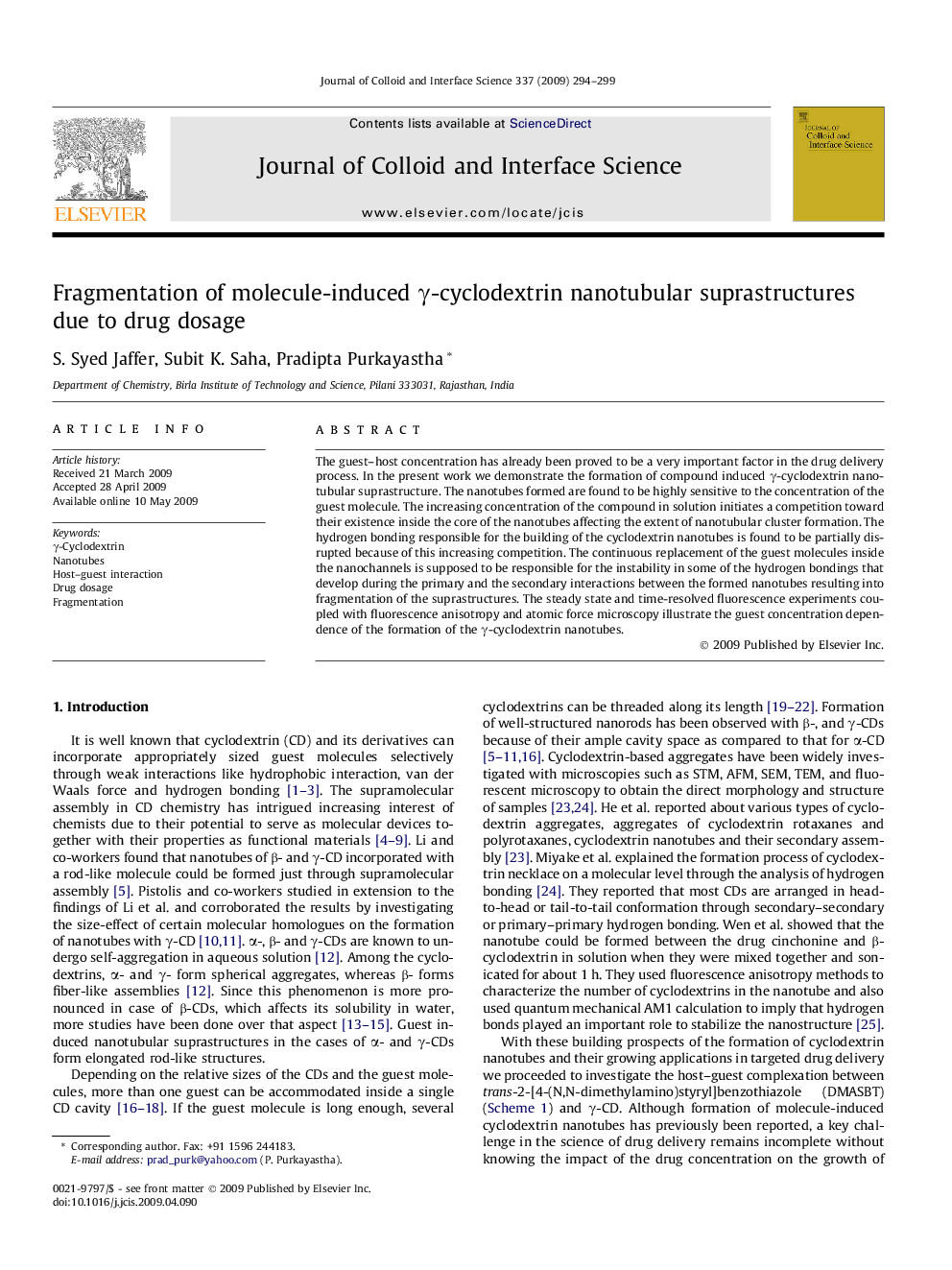| Article ID | Journal | Published Year | Pages | File Type |
|---|---|---|---|---|
| 610691 | Journal of Colloid and Interface Science | 2009 | 6 Pages |
The guest–host concentration has already been proved to be a very important factor in the drug delivery process. In the present work we demonstrate the formation of compound induced γ-cyclodextrin nanotubular suprastructure. The nanotubes formed are found to be highly sensitive to the concentration of the guest molecule. The increasing concentration of the compound in solution initiates a competition toward their existence inside the core of the nanotubes affecting the extent of nanotubular cluster formation. The hydrogen bonding responsible for the building of the cyclodextrin nanotubes is found to be partially disrupted because of this increasing competition. The continuous replacement of the guest molecules inside the nanochannels is supposed to be responsible for the instability in some of the hydrogen bondings that develop during the primary and the secondary interactions between the formed nanotubes resulting into fragmentation of the suprastructures. The steady state and time-resolved fluorescence experiments coupled with fluorescence anisotropy and atomic force microscopy illustrate the guest concentration dependence of the formation of the γ-cyclodextrin nanotubes.
Graphical abstractCompound induced γ-cyclodextrin nanotubular suprastructure formation is found to be highly sensitive to the concentration of the guest molecule, increasing concentration of which affects the length of the clusters.Figure optionsDownload full-size imageDownload high-quality image (59 K)Download as PowerPoint slide
